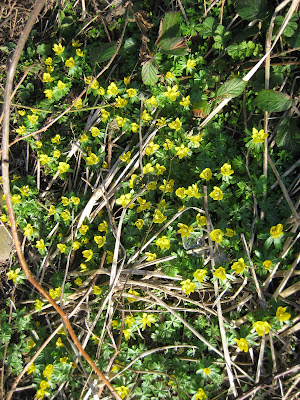City of Edinburgh Council's first Allotment Strategy "Cultivating Communities" (2002) (p28) adopted the following "comparability factors" from the "Growing in the Community - A Good Practice Guide for the Management of Allotments" (produced by the Department of the Environment, Transport and Regions, The Greater London Authority, the Local Government Association and Shell Better Britain Campaign (2001))
The three factors are:
- the level of allotment rents in the rest of Scotland and the scale in England
- costs of other outdoor recreational or leisure activities provided by the authority.
- rent concessions should be granted, on a published scale.
(I know that last one doesn't look like a comparability factor , but that's how it is written)
When the next City of Edinburgh Allotment Strategy "Cultivating Communities: A Growing Challenge 2010-2015" was published in 2010, setting in stone steep rent rises to £100 for the period up to 2014, no reference was made to these guiding principles.
So, how would they fare against these comparitors? Not an easy question as there is no central database of information. However various surveys have been run on blogs and allotment websites. They all show that Edinburgh is head and shoulders above the rest in pressing for higher rents.
Here is an extract of the figures from (of all places) moneysavingexpert.com (see link) who ran two threads in October 2010 and most recently January 2011.
http://forums.moneysavingexpert.com/showthread.php?t=2969206
£25 per year
£35 for a 20X150 feet plot
£11 for 5m x 25m
£60ish last year in South Notts
£17.50 a year for a full plot
£40 a year for 259sqft
£30 a year
Our fees will stay at £11 this year
£25 in South Wales
£20 for a full plot (80’ x 40’) ..the next council area costs £60
**“I charge £100 for a full plot 30 x 90 feet” Private site owner
£25 annual fee
Up from £17 to £19 last autumn
£65 ish for a year for a full plot in London
£30 for a 30ft by 80ft app
Birmingham council are increasing from £24 to £75 over the next three years (You can buy a lot of veg for £75)
£15 for 20 rod
£35 annually for a full plot (Glasgow)
£35 including water (Leeds)
£35 per yr with water
£50ish Manchester
£40 Leeds
£20 for ½ plot North Notts
£28 this year £40 next year
£27.50 for a 5 rod plot including membership to the allotment society
**£125 10m x 12.5m (a private allotment)
£50
Leaving in the two private allotment sites** of £100 and £125 the average is still under £37. (Without them it would be £31) Both a lot less that the £70 we are paying in Edinburgh this year
City of Edinburgh Council are allowed to charge a fair rent for use as an allotment under the laws governing the regulation of allotments , not an arbitrary one. They must make reference to some other factors rather than the law of supply and demand. I've already shown they are completely out of step with the RPI, now it seems they are out of step with the rest of the UK. So where is the justification? I am calling my local Allotment Association (Lady Road) to demand a rent review - asap.























